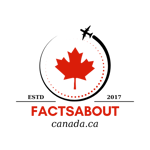How Canada’s Federal Elections Work: A Simple Guide
Canada’s federal elections might seem complex, but they’re built on straightforward principles designed to ensure fair representation. Whether you’re a first-time voter or just curious, here’s an easy-to-understand guide to how Canada’s elections work.
1. Canada is Divided into Ridings
Canada is divided into electoral districts, commonly called ridings. Each riding represents a specific geographic area and elects one Member of Parliament (MP) to the House of Commons.
2. First-Past-the-Post Voting System
Canada uses the first-past-the-post system. In each riding, the candidate who receives the most votes wins, even if they don’t have an absolute majority (over 50%).
3. Political Parties Play a Major Role
Candidates typically belong to political parties, like the Liberal Party, Conservative Party, or New Democratic Party (NDP). The party that wins the most ridings usually forms the government, and its leader becomes the Prime Minister.
4. Fixed Election Dates—But Flexible Timing
Federal elections are supposed to be held every four years on the third Monday of October. However, the Prime Minister can ask the Governor General to dissolve Parliament and call an early election, which is what’s happening now!
5. Advance Voting and Mail-In Ballots Are Available
Can’t vote on election day? No problem. Voters can:
-
Vote early at advance polls
-
Vote by mail-in ballot
-
Vote at their local Elections Canada office before election day
6. Voter Eligibility Requirements
To vote in a federal election, you must:
-
Be a Canadian citizen
-
Be 18 years or older on election day
-
Be registered on the voters list (can register online or at the polls)
7. Elections Canada Oversees Everything
Elections Canada is the independent agency responsible for organizing federal elections, ensuring fairness, transparency, and accessibility throughout the process.
8. The Role of the Governor General
After an election, the Governor General formally invites the leader of the party with the most seats to form the government. They also dissolve Parliament when an election is called.
9. Minority vs. Majority Government
-
A majority government occurs when one party wins over 50% of seats.
-
A minority government happens when no single party has a majority, often leading to alliances or coalitions.
10. Election Day Process is Simple
On election day, voters go to their assigned polling station, present ID, receive a ballot listing candidates, and mark an “X” beside their choice. Ballots are then counted manually.
Final Thoughts:
Canada’s federal election process is straightforward but built to ensure every citizen’s voice counts. As Canada prepares for another election, understanding how it works empowers you to make informed decisions at the polls.
